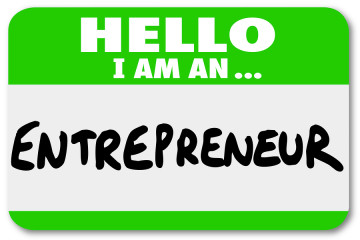Fostering Collaboration in a Technologically Evolving Workplace

by Peter Chris October 23, 2024
Collaboration and teamwork have long been vital components of a successful workplace, driving innovation, efficiency, and employee satisfaction. However, as the modern work environment evolves, so too do the methods and tools we use to collaborate. With the advent of advanced technologies, collaborative working is undergoing a transformation, blending traditional techniques with cutting-edge solutions to enhance communication, coordination, and collective problem-solving. This article will explore the best approaches to fostering collaborative working, focusing on how new technologies such as Virtual Reality (VR) are shaping the future of teamwork.
The Foundations of Effective Teamwork
At its core, successful teamwork hinges on clear communication, mutual trust, and a shared understanding of goals. Project managers, departmental managers, and HR leaders know that effective collaboration requires more than just assembling a group of people. It involves establishing clear roles, ensuring open channels of communication, and creating a culture where team members feel empowered to contribute.
A key aspect of collaboration is promoting a sense of accountability and ownership within the team. This can be fostered by setting clear expectations, maintaining regular check-ins, and encouraging feedback. A collaborative team thrives when its members trust one another and feel that their contributions are valued.
However, achieving this level of cohesion is not without challenges, especially in today’s increasingly remote and hybrid work environments. This is where new approaches and technologies come into play, helping teams stay connected and collaborative, even when they’re not physically in the same space.
The Changing Face of Collaboration: Technology at the Forefront
The way teams collaborate is changing rapidly, thanks to advancements in digital tools that are streamlining workflows and enhancing communication. Today’s managers have access to a wide range of technologies designed to improve collaboration, from project management software that tracks progress in real-time to instant messaging platforms that keep team members connected across different locations.
One of the most significant shifts is the move towards cloud-based solutions, which allow teams to work together on documents and projects from anywhere in the world. Platforms like Microsoft Teams and Slack have become staples in the modern workplace, enabling real-time collaboration and making it easier for teams to share ideas, files, and feedback without delay.
These tools are not just about convenience; they are reshaping the very dynamics of how teams work together. By reducing barriers to communication and collaboration, technology is fostering a more agile and responsive work environment. But while cloud-based tools and messaging platforms have undoubtedly revolutionised teamwork, a new technology is emerging that promises to take collaboration to an entirely new level: Virtual Reality.
Virtual Reality: Redefining Collaboration
Virtual Reality (VR) is no longer just the domain of gaming; it is making significant strides in the business world, particularly in how teams collaborate. VR offers a unique opportunity to bridge the gap between remote and in-person work, creating immersive environments where team members can interact, brainstorm, and problem-solve as if they were physically in the same room.
This technology is especially useful for teambuilding and collaborative exercises, where the sense of presence and engagement is crucial. With VR, team members can participate in simulated environments that mimic real-world scenarios, allowing them to develop skills, solve complex challenges, and build stronger working relationships without the need for physical proximity.
One company at the forefront of this shift is PMC-VR, a London based VR solution developer, that provides innovative VR based teambuilding events combining the best of traditional teambuilding strategies with immersive VR experiences.
PMC is also developing bespoke multiuser VR collaboration environments allow teams to work together in dynamic and engaging settings, tailored to their specific needs and objectives. These environments enable teams to collaborate on projects, brainstorm ideas, and simulate real-world problem-solving in a way that feels both natural and highly interactive.
By incorporating VR into collaborative efforts, teams can benefit from an enhanced sense of presence and engagement, which can be particularly valuable for remote or dispersed teams. It also allows for the in-person experience while being in different geographical locations.
As VR technology continues to evolve, it is likely that more organisations will explore its potential to transform the way teams work together.
Best Practices for Collaborative Working in a Digital World
As technology reshapes collaboration, there are several best practices that managers can adopt to ensure their teams are working effectively, whether in-person or remotely.
–1. Leverage the Right Tools: Choosing the right collaboration tools is essential. Teams should have access to platforms that facilitate communication, file sharing, and project tracking, such as Microsoft Teams or Asana. For more immersive collaboration, VR platforms like those offered by PMC-VR can provide a cutting-edge solution.
–2. Foster a Culture of Openness: Collaboration thrives in an environment where team members feel comfortable sharing ideas and providing feedback. Encourage open communication and ensure that all team members feel heard, regardless of their role or location.
–3. Set Clear Goals and Expectations: A collaborative team works best when everyone understands their objectives. Set clear, measurable goals and ensure that all team members are aligned on what success looks like.
–4. Promote Accountability: Trust is a key component of effective teamwork. By promoting a sense of ownership and accountability, managers can ensure that team members are committed to their responsibilities and feel invested in the team’s success.
The Future of Collaboration
As we look to the future, it’s clear that technology will continue to play a pivotal role in shaping how teams collaborate. Virtual Reality, in particular, offers exciting possibilities for creating more immersive and interactive work environments, enabling teams to engage in ways that were previously unimaginable.
For managers looking to stay ahead of the curve, embracing new technologies and adopting best practices for collaboration will be key to driving innovation and success in an increasingly digital world.
To find out more about PMC-VR and their VR based teambuilding events check here .
And if you are interested in teambuilding, take a look at these top 10 teambuilding activities in London list.
By Peter Chris







No Comment